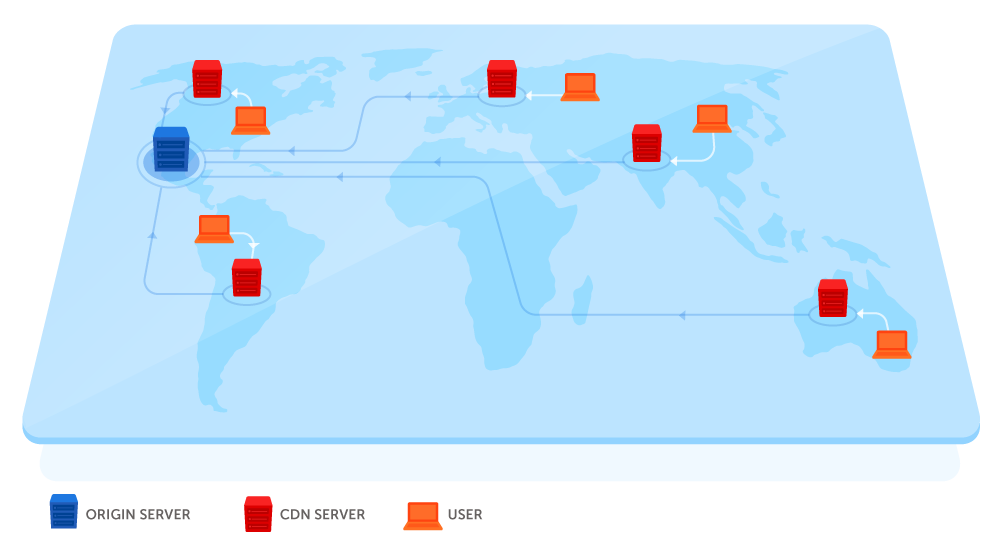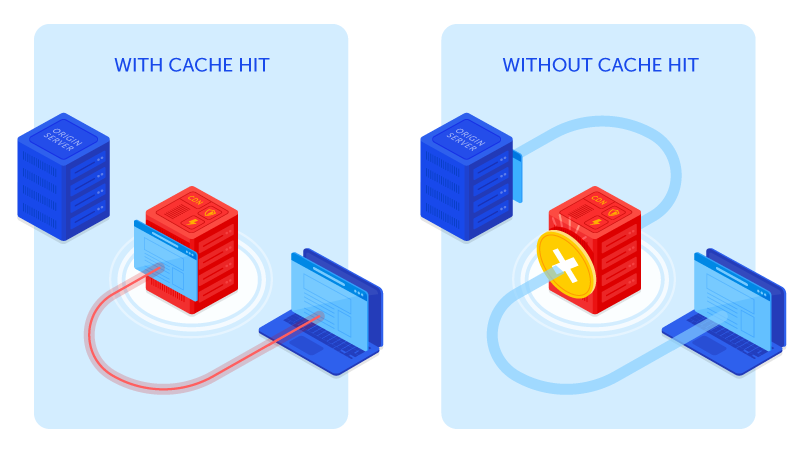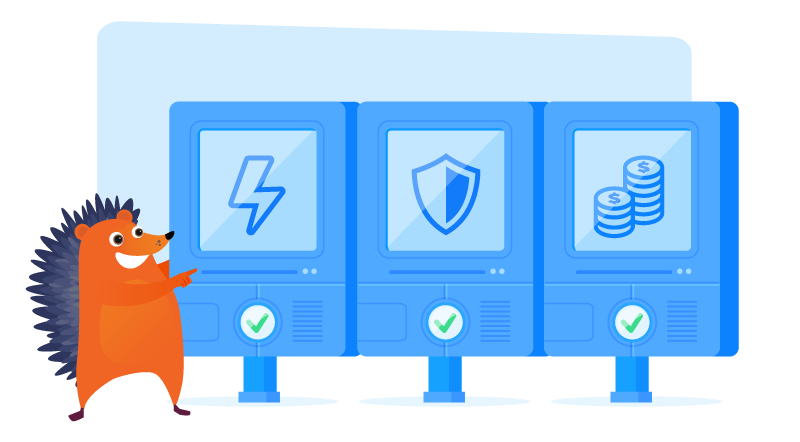| Subtotal | $0.00 |
| Subtotal | $0.00 |

If you have a website that’s accessed by users around the globe, you will benefit from using a Content Delivery Network (CDN). Most of the world’s top websites use them — they’re responsible for websites loading quickly and reliably, without any downtime.
So, what exactly is a CDN and how does it work? This article will answer these questions, and explore the numerous advantages CDNs give businesses.
A content delivery network is a linked group of servers that are distributed around the world to deliver faster website content (also known as assets) to users. This content can be anything from images and videos, to JavaScript files, HTML pages, and style sheets.
Before we talk more about what a CDN does, let’s take a step back and look at what happens when you type a website address into your Internet browser to load a webpage. Your browser sends an HTTP request to the appropriate server (if you don’t use a CDN, this will be the origin server your website is hosted on) to download the assets that make up that webpage. The server then sends back a file with the assets, and your browser renders the webpage on the screen of your device.

But when you use a CDN, your website’s static content isn’t just stored on the origin server. Copies, or cached versions of your website content, are also stored across a whole network of servers. So, when a user loads a page from your website on their browser, it won’t pull the content only from the origin server, it will access a server located closest to your site’s cached content for faster delivery.
These days, most websites deliver content to a global audience. If your website doesn’t use a CDN, and your end-user is located on a different continent to the origin server, website data will have a lot further to travel. That means slower webpage load time. The delay is known as latency, and it’s one of the biggest factors affecting how users perceive a website’s performance.
With a CDN, the assets are pulled from a server closer to the user, so load time is faster, latency is minimized. And this results in your website visitors experiencing a fast, reliable service, no matter where in the world they’re located.
Most of the Internet’s top websites, such as Netflix, Facebook, and YouTube, use a CDN to deliver faster content to users. In fact, according to BuiltWith, 80.83% of the world’s top 10,000 websites use a CDN. Whether you realize it or not, you likely interact with CDNs on a regular basis.
Here are some key terms you should know when it comes to CDN infrastructure:
This is the technology CDNs are built on. Deployed in front of your backend server on the edge of your network, a reverse proxy is a server that acts as a middleman between a website user’s device (also referred to as client) and the website’s origin server.
The reverse proxy intercepts the user’s request, such as when a webpage is loading in a browser. It prevents the user’s server from communicating directly with the origin server. In a CDN, the reverse proxy communicates with the origin server for the client, and will send the client’s request to the server which is closest to them geographically.
Short for Internet Exchange Point, an IXP is the physical location a network (such as a CDN) connects with.
A Point of Presence is a geographic location where a group of CDN edge servers is stored. When you use a CDN, users will be directed to the closest PoP to them.
This is where the copies of your website content are cached. As the name suggests, an edge server exists on the ‘edge’ of a network, acting as a point of entry between two networks. They are placed in IXPs, so that different networks can connect quickly and securely. When cached content from your site is successfully delivered to users from the edge server, this is known as a cache hit. Whereas a missed cache hit refers to when content is pulled from the origin server.

There are a host of benefits to using a CDN. Here are the top three:
As explained, CDNs will cache your website’s data on servers in interconnected locations around the globe, which allows for a short distance between users and where website assets are stored. This shortened distance results in high-speed data delivery, a fast website.
Additionally, because your website’s data is distributed across several servers, your website is more likely to have uninterrupted service and less downtime. If there is a rapid boost in traffic or a server failure, traffic will be redistributed to other servers.
Many CDNs have built-in protection from DDoS (Distributed Denial-of-Service) attacks. A DDoS attack is an attempt by malicious actors to interrupt service of your website by flooding a targeted server or network with more Internet traffic than it can handle, which can render a website unavailable. A CDN helps to block these kinds of threats from ever reaching the origin server by redistributing traffic to other servers.
Most CDNs also integrate SSL Certificates, which means that all traffic is encrypted (data is rendered unreadable to unauthorized parties).
CDNs take the pressure off origin servers when it comes to delivering assets. As a result, they lower hosting bandwidth consumption. This lowers hosting costs – which can be a big expense for websites.

Using a CDN improves the reliability of your website in a number of key ways, from general website performance, to bolstering security. If you have a website with an international audience, there is no good reason not to use a CDN — website users get content delivered securely in just a few milliseconds, no matter where they’re located.
You can speed up your site by over 68% with Supersonic CDN from Namecheap. Our super-fast and secure CDN is simple to use and has 45 locations around the world. Pricing starts from a FREE Plan to the Advanced Package.
We’re giving Namecheap EasyWP, domain and DNS users exclusive early access to our new Supersonic CDN. Learn more.
Need help? We're always here for you.